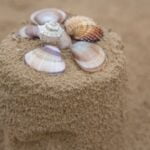Decorating a cake is an art, and it’s a shame when all that hard work and creativity goes to waste. That’s where freezing comes in as a valuable technique for preserving the freshness and flavor of decorated cakes. Whether you’re a professional baker or someone who loves to bake at home, knowing how to properly freeze a decorated cake can be a game-changer.
The importance of freezing a decorated cake lies in its ability to maintain the cake’s taste and texture over time. Freezing slows down the staling process, keeping the cake moist and delicious for longer periods. Not only does this save you from throwing away leftover cake, but it also allows you to prepare ahead for special occasions or events.
Aside from preserving the quality of the cake, freezing also offers several benefits. One of the most significant advantages is convenience. By freezing your decorated cakes ahead of time, you can have them readily available whenever you need them. No more last-minute rush or stress. Additionally, freezing allows for better time management, as you can prepare and decorate your cakes in advance, freeing up more time for other tasks.
In the following sections, we will guide you through every step of the freezing process: proper preparation of the cake, selecting suitable containers, techniques for freezing both cake layers and fully decorated cakes, defrosting processes, post-thawing refreshment tips, as well as advice on freezing leftover slices or portions. With our comprehensive guide, you’ll become an expert in preserving your decorated cakes’ quality while ensuring they remain just as beautiful and tasty when serving them later on.
Proper Preparation of the Cake for Freezing
Freezing a decorated cake requires proper preparation to ensure that it maintains its freshness and flavor. Before freezing, it is important to cool the cake completely. This allows the moisture in the cake to redistribute evenly, preventing any potential moisture loss or texture changes during freezing. It is recommended to let the cake cool for at least 1-2 hours before proceeding with the freezing process.
Another crucial step in preparing a cake for freezing is removing any frosting or fillings that may not freeze well. Some frostings or fillings, such as those made with fresh dairy products or delicate fruits, can become watery or lose their texture when frozen and thawed. To avoid this, carefully remove any frosting or filling from the cake before wrapping it for freezing.
When wrapping the cake, it is important to do so properly to prevent freezer burn and maintain its quality. Start by tightly wrapping the cake with plastic wrap, ensuring that all surfaces are covered and sealed. Then, place it in a freezer-safe container or wrap it again with aluminum foil for added protection.
This double layer of wrapping helps to keep out air and prevent any potential freezer burn. Label the container with the date and contents before placing it in the freezer.
To summarize:
- Cool the cake completely before freezing.
- Remove any frostings or fillings that may not freeze well.
- Wrap the cake tightly with plastic wrap and place it in a freezer-safe container or wrap it again with aluminum foil.
By following these steps, you can ensure that your decorated cakes remain fresh and delicious even after being frozen.
Selecting the Right Freezing Containers
When it comes to freezing a decorated cake, selecting the right containers is crucial to maintaining its quality and appearance. The chosen containers should be able to withstand freezing temperatures without affecting the taste or texture of the cake. Here are some key considerations when selecting freezing containers for your decorated cakes.
Firstly, plastic containers are a popular option for freezing cakes. Make sure to choose containers that are labeled as freezer-safe and can withstand low temperatures. These containers provide a tight seal, preventing any moisture or air from entering and damaging the cake. Additionally, plastic containers come in various shapes and sizes, allowing you to find one that fits your specific cake.
Cake boxes are another suitable option for freezing decorated cakes. These boxes are designed specifically for storing and transporting cakes, making them ideal for frozen cakes as well. Cake boxes usually have a sturdy construction with a tight lid, offering protection against freezer burn and other potential damages.
Freezer-safe bags are a convenient choice for freezing smaller portions of decorated cakes or individual slices. These bags take up less space in the freezer compared to larger containers but still provide adequate protection. Look for bags that are thick enough to prevent any moisture loss or damage from occurring.
In selecting the right container for your frozen cake, it’s also important to consider the size and shape of the cake itself. Make sure that the container provides enough space to accommodate both the cake and any decorations on top without causing them to get squished or deformed during freezing.
By choosing appropriate containers that can withstand freezing temperatures and accommodate your specific cake needs, you can ensure that your decorated cakes will remain intact and retain their delicious flavors even after being stored in the freezer.
| Type of Container | Benefits |
|---|---|
| Plastic containers | – Tight seal to prevent moisture or air from entering
|
| Cake boxes | – Sturdy construction with a tight lid
|
| Freezer-safe bags | – Convenient for smaller portions or individual slices
|
Freezing Cake Layers
Properly freezing cake layers is crucial to ensure that they maintain their freshness and taste when thawed. By following these guidelines, you can effectively freeze your cake layers without compromising their quality.
Before freezing the cake layers, it is important to divide the cake into individual layers. This allows for easier handling and thawing. Once divided, wrap each layer tightly in plastic wrap or aluminum foil to prevent moisture loss and freezer burn. Make sure the layers are completely sealed to maintain their freshness.
When it comes to storing the wrapped cake layers in the freezer, consider using stackable techniques for convenient storage. One option is to place them on a flat baking sheet or tray, with a layer of parchment paper between each layer. This prevents the cake layers from sticking together and makes it easier to retrieve individual layers when needed.
| Steps | Description |
|---|---|
| 1 | Divide the cake into individual layers |
| 2 | Wrap each layer tightly in plastic wrap or aluminum foil |
| 3 | Use stackable techniques for convenient storage, such as placing them on a flat baking sheet with parchment paper between each layer. |
It is also important to label and date the wrapped cake layers before placing them in the freezer. This will help you keep track of how long they have been stored and ensure that you use them within a reasonable timeframe.
When it’s time to thaw the frozen cake layers, remove them from the freezer and let them defrost in the refrigerator overnight. This gradual thawing process helps retain moisture and prevents any potential texture changes. Once thawed, the cake layers are ready to be used for assembly and decoration.
By following these steps, you can freeze your cake layers effectively, ensuring that they remain fresh and delicious when it’s time to use them. Whether you’re a professional baker or someone looking to save time when preparing a decorated cake, proper freezing techniques are essential for successful cake assembly.
Freezing Fully Decorated Cakes
Decorating a cake can be a time-consuming and intricate process, so it’s important to know how to properly freeze a fully decorated cake to preserve its beauty and taste. Freezing a decorated cake allows you to prepare in advance for special occasions or events, saving you time and effort on the day of the event. However, freezing a fully decorated cake requires special attention to ensure that delicate decorations are protected and the cake remains in perfect condition.
Tips for Freezing Cakes That Are Fully Frosted and Decorated
When freezing fully decorated cakes, it is crucial to take extra precautions to protect any delicate decorations from damage. One way to shield these decorations is by placing protective barriers around them before wrapping the entire cake. You can use materials such as plastic wrap or parchment paper folded into strips and gently placed around each decoration before wrapping the cake. This will help prevent shifting or disarray during freezing.
Additionally, properly securing the decorations on the cake is essential to maintain their integrity. Use toothpicks or wooden skewers strategically placed throughout the cake for support. Make sure these supports are sturdy enough to hold the weight of the decorations without damaging the cake’s structure.
Proper Storage Techniques
To freeze a fully decorated cake, start by ensuring that your freezer has enough space to accommodate the size of your cake without compressing it against other items. It’s recommended to let your fully frosted and decorated cake chill in the refrigerator for at least 1 hour before transferring it to the freezer. This will allow the frosting to harden slightly, making it less susceptible to damage during wrapping.
Once chilled, tightly wrap your cake with several layers of plastic wrap or aluminum foil, ensuring that every part of the cake is covered securely. This will help prevent moisture loss and freezer burn. Place your wrapped cake in an airtight container or a freezer-safe bag for additional protection. Label the container with the cake’s flavor and date of freezing for easy identification later on.
Thawing a Frozen Decorated Cake
When it’s time to thaw your fully decorated frozen cake, it’s important to do so properly to maintain its quality. Transfer the frozen cake from the freezer to the refrigerator and allow it to thaw overnight. This slow thawing process will help retain moisture and prevent any condensation from damaging the decorations.
Avoid placing a frozen cake directly under warm or hot water or using a microwave for thawing, as these methods can compromise both taste and presentation. Patience is key when thawing a decorated cake; rushing could lead to uneven thawing or even spoilage.
Freezing fully decorated cakes can be a great way to ensure you have dessert prepared in advance for special occasions. By following these tips and techniques, you can successfully freeze your beautifully decorated cakes without sacrificing taste or appearance. Whether it’s for a birthday party, wedding, or any other celebration, freezing a fully decorated cake allows you to enjoy every bite while saving valuable time on the day of the event.
Defrosting and Thawing Process
After successfully freezing a decorated cake, it is important to properly defrost and thaw it before serving. Improper thawing can lead to a loss of flavor, texture, and overall quality of the cake. In this section, we will discuss the recommended steps for defrosting a frozen cake, provide timing suggestions based on the size and type of cake, and offer techniques to ensure even thawing without compromising the cake’s integrity.
Recommended Steps for Defrosting a Decorated Frozen Cake
- Transfer the frozen cake to the refrigerator: The best method for defrosting a decorated frozen cake is to transfer it from the freezer to the refrigerator. This gradual thawing process allows the cake to slowly come back to its original state while minimizing any moisture loss. Remove any plastic wrap or covering before placing it in the refrigerator.
- Allow ample time for thawing: The time required for defrosting depends on various factors such as the size of the cake and its composition (e.g., buttercream or fondant). As a general rule, give larger cakes at least 24 hours to fully thaw in the refrigerator. Smaller cakes may require less time but be sure to check for complete softening of all layers.
- Avoid temperature fluctuations: To prevent condensation or moisture buildup during thawing, avoid moving the cake between extreme temperature environments. Keep it in the refrigerator until ready for serving without exposing it to room temperature or direct sunlight.
Techniques for Even Thawing
- Level out temperature gradients: Uneven thawing can lead to an inconsistent texture throughout the cake. To promote even thawing, consider flipping each layer halfway through the defrosting process. This allows both sides of each layer to experience equal temperature exposure.
- Maintain proper airflow: Ensure that air can circulate freely around the cake during thawing. Placing the cake on a wire rack or use of a cake dome with ventilation holes can help maintain airflow and prevent excessive moisture buildup.
- Avoid microwaving or using heat sources: While it may be tempting to speed up the thawing process, using a microwave or other heat sources can cause undesirable effects such as melting frosting, warping decorations, and unevenly cooked areas. Stick to the refrigerator method for optimal results.
By following these techniques for defrosting and thawing a frozen decorated cake, you can ensure that it regains its fresh taste, texture, and appearance before serving it to your guests. It is important to be patient throughout this process in order to maintain the integrity of the cake and enjoy its full potential.
Refreshing Frozen Cakes Post-Thawing
Freezing a decorated cake can be a great way to preserve its freshness and flavor over an extended period of time. However, once the cake has been thawed, it may not look as fresh or appealing as it did when it was first decorated. In this section, we will discuss some tips on how to refresh a frozen cake post-thawing to enhance its appearance and taste.
One simple way to refresh a thawed cake is by utilizing decoration techniques. You can easily revive the beauty of the cake by adding some fresh frosting or icing on top. This will not only improve its appearance but also add extra flavor and texture.
You can use a piping bag with different nozzles to create attractive designs or patterns on the surface of the cake. Sprinkling some colored sugar, edible glitter, or even fresh fruit on top can also make the cake more visually appealing.
In addition to decorating, you can further enhance the taste of the thawed cake by adding extra frosting or filling between the layers. This will add moisture and richness to the cake, making it more enjoyable to eat.
You can experiment with different flavors of frosting or fillings that complement the existing flavors in your cake. For example, if you have a chocolate cake, you can add a layer of chocolate ganache or flavored buttercream between each layer for an extra indulgent experience.
Overall, refreshing a frozen and thawed cake is all about being creative with decorations and additions that improve both its appearance and taste. By following these simple tips, you can transform your thawed decorated cakes into delicious treats that still impress your guests and satisfy your cravings.
- Utilize decoration techniques like adding fresh frosting or icing
- Use piping bags with different nozzles for attractive designs
- Sprinkle colored sugar, edible glitter, or fresh fruit on top
- Add extra frosting or filling between layers to enhance taste
- Experiment with different flavors of frosting or fillings
Freezing Leftover Cake Slices or Portions
Freezing leftover cake slices or portions is a great way to extend the enjoyment of your decorated cake. Whether you have a few extra pieces from a special occasion or want to save some for future treats, proper freezing techniques will ensure that the cake remains fresh and delicious.
To freeze individual slices or portions of a decorated cake, it’s important to wrap them tightly to prevent freezer burn. Start by placing each slice on a piece of plastic wrap or wax paper. Wrap the slice tightly and secure it with tape or twist ties. For added protection, place the wrapped slices in an airtight container or resealable freezer bag before storing them in the freezer.
When it comes time to enjoy your frozen cake slices, it’s essential to thaw them properly. The best method is to move the wrapped slices from the freezer to the refrigerator and let them thaw gradually overnight. This slow defrosting process will help maintain the cake’s texture and flavor.
Once thawed, your frozen cake slices can be enjoyed as is, or you can refresh them by adding some extra frosting or filling. This will not only enhance the flavor but also make them look freshly baked. Simply spread a thin layer of frosting between each layer and on top of the slice before serving.
By following these guidelines for freezing leftover cake slices or portions, you can enjoy your delicious creations at your convenience and never let any go to waste. With proper wrapping and careful thawing, you can savor the taste and beauty of your decorated cake long after its original serving date.
Frequently Asked Questions
Can you freeze a cake with decorations on it?
Freezing a cake with decorations on it is possible, but it is not ideal. The freezing process can affect the texture and appearance of the decorations, causing them to become mushy or lose their shape when thawed.
Also, some types of decorations like fresh flowers or delicate piping may not freeze well at all. If you need to freeze a decorated cake, it is best to use decorations that are sturdy and can withstand the freezing and thawing process without being compromised.
Can you freeze an iced decorated cake?
Yes, you can freeze an iced decorated cake. However, it is important to take certain precautions to ensure that the cake retains its taste and texture after thawing. Firstly, make sure that the icing on the cake is fully set before freezing it.
Once frozen, wrap the cake tightly in plastic wrap or place it in an airtight container to prevent freezer burn and absorb odors from other foods. When you’re ready to serve the cake, allow it to thaw slowly in the refrigerator for several hours or overnight so that condensation doesn’t form on the icing and ruin its appearance.
Is it better to freeze or refrigerate decorated cake?
When it comes to storing a decorated cake, refrigeration is generally recommended over freezing if immediate consumption isn’t required. Refrigerating a decorated cake helps prolong its freshness for several days while maintaining its taste and texture reasonably well.
However, keep in mind that refrigerating a cake may cause minor changes in its texture due to moisture loss or absorption from surrounding foods. To refrigerate a decorated cake properly, cover it loosely with plastic wrap or place it in a cake box stored inside the refrigerator’s main compartment – not in the freezer section where lower temperatures may dry out the cake faster.

Welcome to my blog about home and family. This blog is a place where I will share my thoughts, ideas, and experiences related to these important topics. I am a stay-at-home mom with two young children. I hope you enjoy reading it! and may find some helpful tips and ideas that will make your home and family life even better!





